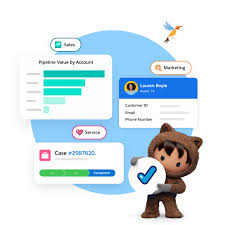Streamlining Data Management: Harnessing Zero Copy Integration for Efficient Customer Insights
Zero copy integration offers a revolutionary approach to accessing and utilizing customer data without the need for burdensome data transfers. By seamlessly linking disparate databases, this innovative technique eliminates the complexities associated with moving, copying, or reformatting data. Let’s explore how zero copy integration can optimize data management processes and enhance the efficiency of customer data platforms (CDPs) alongside traditional data warehouses.
Understanding Zero Copy Integration: Zero copy integration, also known as zero ETL (extract-transform-load), facilitates the sharing of data across multiple databases without physically relocating it. This method enables real-time access to data, significantly reducing costs and mitigating the risks of errors inherent in data movement processes. Unlike traditional data replication methods, zero copy integration ensures that data remains in its original location, eliminating the need for redundant storage and synchronization efforts.
Good technology standards can actually bring order to the chaos and allow products from different companies to work together, fostering healthy competition and enhancing productivity. That is precisely what Zero-Copy Integration does.
Zero-Copy Integration is a framework that eliminates the need for data copies and integration, making it easier to work with applications, analytics, artificial intelligence, and machine learning. Canada’s Digital Governance Council recently announced that Zero-Copy Integration has been published for open access by the public, setting a new standard for data collaboration.
Moreover, Zero-Copy Integration prioritizes data-centricity and active metadata over complex code and solution modularity over monolithic design. It also facilitates data governance through data products and federated stewardship, eliminating the need for centralized teams.
In addition to boosting the development and deployment of new technologies, Zero-Copy Integration also addresses the growing number of data privacy regulations. By putting data at the center of the process, Zero-Copy Integration ensures greater collaboration and control, positively affecting industries like healthcare, research, banking, and public services.
Benefits of Zero-Data Integration
Proponents of zero-copy integration and dataware say the framework will lower data storage costs, improve performance of IT teams, improve privacy and security of data, and drive innovation in systems for public health, social research, open banking and sustainability through innovations in:
- Application development and enrichment.
- Predictive analytics.
- Digital twins.
- Customer 360 technology.
- Artificial intelligence and machine learning.
- Workflow automation.
- Legacy system modernization.
Comparing Traditional vs. Zero Copy Integration:
| Aspect | Traditional | Zero Copy |
|---|---|---|
| Replication | Requires copying data to target | Data remains in original location |
| Updates | Data accuracy dependent on synchronization | Real-time access to data |
| Cost | Involves data movement expenses | No additional data movement costs |
| Regulatory Compliance | Complex governance due to data duplication | Simplified compliance with source data only |
| Errors | Data movement introduces potential errors | Minimized risk of errors with no data movement |
| Maintenance | Increases complexity with copying and synchronization | Streamlined management with no data relocation |

Implementing Zero Copy Integration: The implementation of zero copy integration varies depending on the platform and direction of data access. Let’s explore how it works in scenarios involving Salesforce Data Cloud and Snowflake data warehouse:
- Data Access from CDP to Data Warehouse:
- Identify relevant data objects within the CDP.
- Link these objects to the data warehouse target.
- Query data across Snowflake and linked CDP objects simultaneously.
- Create virtual tables within Snowflake to represent Data Cloud data, maintaining data structure integrity without physical duplication.
- Data Access from Data Warehouse to CDP:
- Mount data warehouse tables as external data lake objects within the CDP.
- Conduct standard CDP functions such as ID management and analysis.
- Perform federated queries combining Data Cloud and data warehouse data for comprehensive insights.
Case Study: Buyers Edge’s Zero Copy Success Story: Buyers Edge, a procurement optimization company, leveraged zero copy integration to unify customer profiles in a CDP while accessing purchase data from their data warehouse. By seamlessly integrating Salesforce Data Cloud with their warehouse, Buyers Edge enhanced predictive modeling capabilities, resulting in tailored sales and marketing strategies.
Zero copy integration revolutionizes data management practices by enabling seamless data access and eliminating the need for data duplication or relocation. As businesses navigate the evolving data landscape, leveraging zero copy integration can streamline operations, enhance insights, and empower organizations to unlock the full potential of their data assets.
MILESTONES / TIMELINE
Second half 2023 – Internationalization
February 21, 2023 – Information Session (watch above ☝ or via YouTube)
February 15, 2023 – ‘Zero-copy’ applications published by DCA
February 08, 2023 – Published by Digital Governance Council (Press release)
December 15, 2022 – Approved by Standards Council of Canada
June-Nov 2022 – Public consultation period
🔔🔔 Follow us on LinkedIn 🔔🔔













